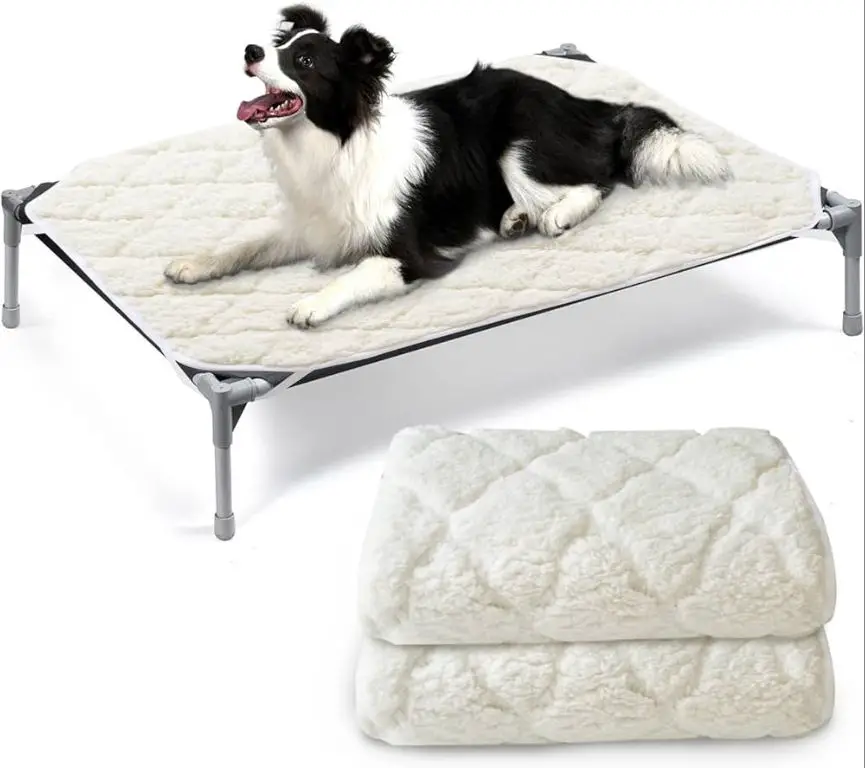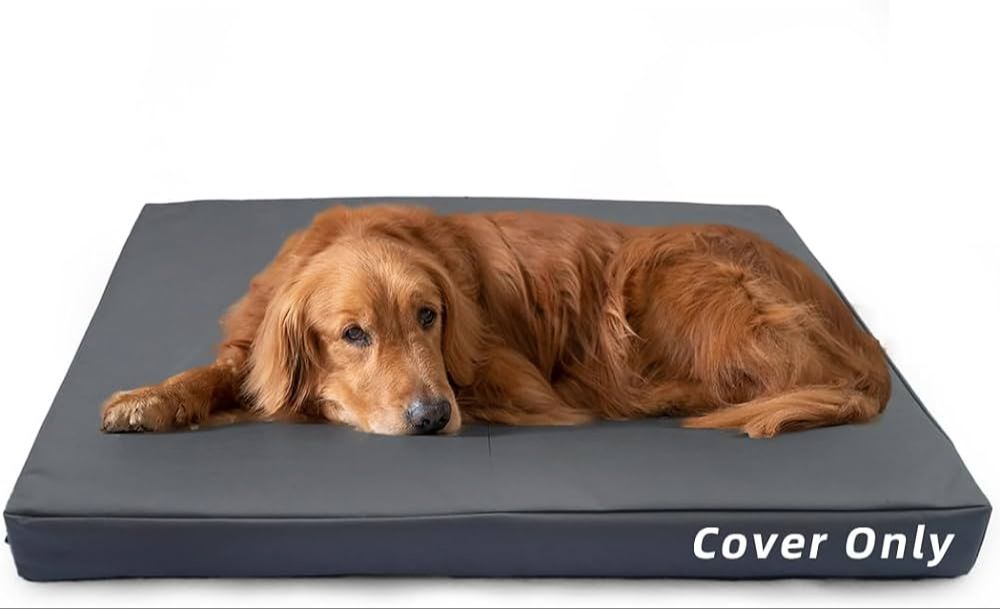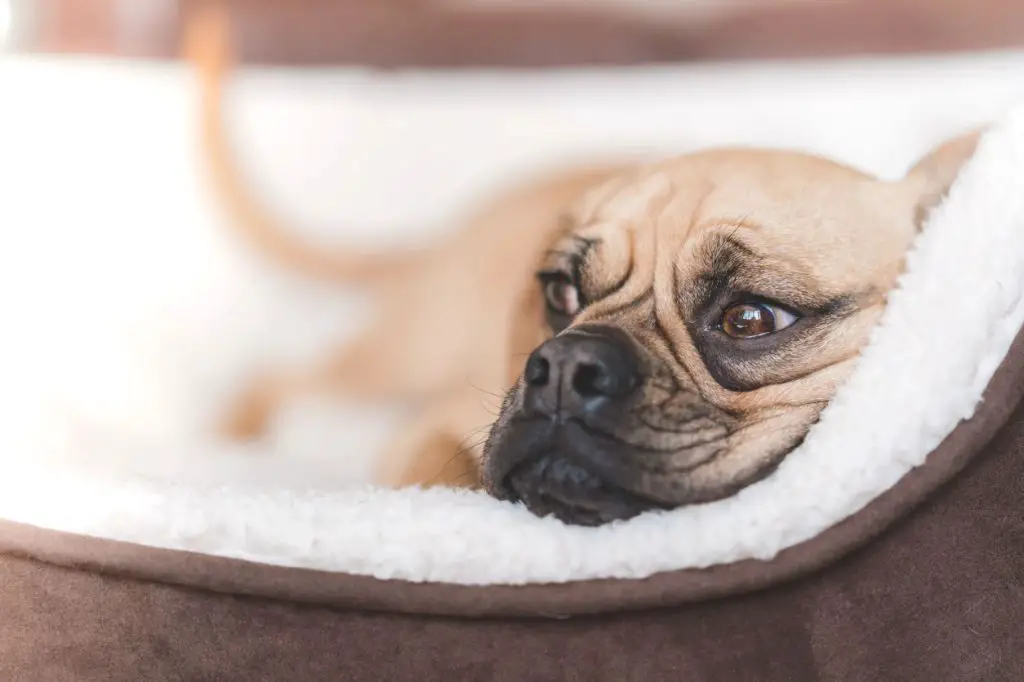Why It’s Important to Wash Dog Beds
Dog beds can collect a lot of dirt, hair, dander, and other debris over time. This buildup can lead to odors and unsanitary conditions if the bed isn’t cleaned regularly. Washing your dog’s bed helps eliminate allergens, keeps your pup healthy, and extends the life of the bed.
As dogs spend many hours sleeping and resting on their beds, dirt and oil from their skin and fur transfers to the bedding material. Food crumbs, drool, urine, and feces accidents can also end up on dog beds. These contaminants can cause odors, attract pests, and irritate your dog’s skin. A buildup of dander, pollen, and other allergens in the bed can also trigger allergic reactions in sensitive dogs.
By washing dog beds regularly, you can remove the hair, dander, dirt, debris, and other contaminants that accumulate over time. The washing process helps sanitize and deodorize the bed, ridding it of anything that could cause odors or allergies. This keeps your dog’s bed fresher and your pup healthier.
Additionally, washing helps preserve the bed and extend its usable life. Letting soils, oils, and stains build up can degrade bedding materials more quickly. Removing the accumulation through washing reduces wear and tear. With regular cleaning, dog beds will maintain their comfort, integrity, and appearance for longer.
Assess if Bed is Machine Washable
Before washing your dog’s bed, it’s important to check if the entire bed is machine washable or requires special cleaning instructions. Here’s what to look for:
- Check Manufacturer Instructions: Consult the care tag or instructions that came with the dog bed. Follow any warnings or cleaning guidelines from the manufacturer.
- Identify Materials: Inspect the exterior cover material and interior filling or stuffing. Beds made with delicate fabrics like silk or wool likely require hand washing. Memory foam, latex foam or polyfill may not be machine washable.
- Look for ‘Machine Washable’ Tag: Check if there is a ‘machine washable’ tag on the dog bed. This indicates the entire bed can safely be washed in a washing machine.

If you cannot find care instructions, identify the materials or a machine washable tag, it’s best to err on the side of caution and hand wash the dog bed to prevent damage.
Remove Cover from Bed

One of the first steps in washing a dog bed with stuffing is to remove the outer cover from the interior filling. This allows you to clean the cover and interior separately for a more thorough clean.
To remove the cover:
- Locate the zipper on the side or bottom of the dog bed cover. Carefully unzip the cover all the way around.
- With the zipper open, peel the cover away from the interior filling. Some stuffing may stick to the cover initially. Gently shake it loose.
- Once the cover is completely removed, set it aside. This will be washed separately after the interior filling is cleaned.
- Gather up all the interior stuffing from the bed. Place it in a separate container or pile to be sanitized and cleaned later.
- With the cover removed and interior filling set aside, you’re ready to thoroughly clean both parts of the dog bed.
By separating the cover from the stuffing, you can target dirt, odors and mites in both components. This helps extend the life of your dog’s bed and keeps it fresh between washes.
Wash Cover
The exterior cover of your dog bed can typically be machine washed unless otherwise noted by the manufacturer. Start by shaking off any loose debris or dirt from the cover. Make sure to check the care instructions, but generally you’ll want to:

- Wash the cover on a gentle cycle using a mild detergent and cold water. Harsher detergents or hot water could fade fabrics or damage the cover.
- Machine dry the cover on a low setting or tumble dry low. You can also air dry the cover to be extra gentle.
Washing the cover regularly will help remove odors, dirt, and grime. Make sure to fully dry the cover before placing it back on the bed.
Clean Interior Filling
The interior filling of your dog’s bed should be cleaned according to the material.
For synthetic fills like polyester fiber, you can wash the filling in the washing machine. Place the removed filling in a mesh bag or pillowcase, and wash it with towels using a mild detergent. Make sure to use the gentle cycle and air dry after.
Cedar filled beds should only be spot cleaned as needed with a damp cloth. Harsh detergents may strip cedar of its natural aromatic oils.
For memory foam interiors, spot clean only with a damp cloth and mild soap if dirty. Do not submerge memory foam in water as it will be difficult to fully dry and may develop mold.
Sanitize Bed
Once you have fully removed all the stuffing from your dog’s bed, it’s important to sanitize the interior of the bed before putting the clean stuffing back in. This helps eliminate any allergens, dirt, or odors that may still be lingering inside the empty bed shell.
To properly sanitize the interior of the bed, first make sure it is completely dry after washing the removable cover. Then, spray down the entire inside surface with a pet-safe sanitizing spray. Avoid using harsh chemicals, and opt for a non-toxic veterinarian-approved pet sanitizer. Thoroughly spray all sides of the interior bed walls and base.
After spraying, allow the bed to fully air dry before putting the clean stuffing back inside. This ensures any moisture from the sanitizing spray has evaporated, leaving just the sanitizing effects behind. Never re-stuff a damp or wet bed, as that can encourage mold growth. Letting it dry completely kills germs and creates a fresh, clean environment for your dog to sleep in.
Re-stuff Bed
After washing and drying the cover, it’s time to re-stuff the bed with the clean filling. Fluffing and redistributing the filling is an important step to help restore the bed’s loft and comfort.
Start by generously fluffing up the filling by hand, working it through your fingers to help separate and lift the fibers. This helps re-loft the filling and reverse any compression that occurred while sleeping on the bed. Fluff the entire amount of filling until it feels light and airy.
Next, evenly distribute the fluffed filling throughout the empty bed cover. Spread it out over the bottom surface and fill in the corners. Shake the bed gently to help the filling settle into an even layer. The filling should not be overly packed down or compressed.
Check if the bed has been filled to its previous capacity and fullness. If it looks like some filling has been lost or compacted, add more new filling to restore the bed to its original size and comfort level. The bed should be filled so that it regains its prior cushioning and support when your dog lies on it.
Once the bed is stuffed full, place the cover over the filling and zip or button it closed. Fluff and pat down any lumps or uneven spots in the freshly stuffed bed. Now it’s ready for your dog to enjoy a refreshed and cozy place to sleep!
Make Bed Comfortable
After washing and drying your dog’s bed, you’ll want to make sure it’s nice and cozy before your pup uses it again. Here are some tips for making your dog’s bed comfortable:

Use your hands to break up any clumps or matted spots in the filling. The filling may get bunched up during washing. Gently massage and fluff the filling to evenly distribute it throughout the bed again. Pull apart any clumped stuffing and shake out the bed to separate the fibers.
Fluff and arrange the filling until the bed looks full, lofty and comfortable. Pat, smooth and shape the stuffing into an even layer, with rounded edges to create a cozy nest shape. Make sure there are no lumps or bare spots.
Once the filling is evenly distributed and smooth, place the cover back on the bed if it came off for washing. Make any final adjustments through the cover to create the perfect sleeping spot for your dog!
Freshen Between Washes
While deep cleaning your dog’s bed regularly is important, there are some simple things you can do between washes to help keep their bed fresh:
Spot clean as needed – If you notice any new stains or dirt on the bed, spot clean the area right away with a pet-safe cleaner. This will help prevent odors and stains from setting in.
Use pet odor eliminators regularly – Spray pet odor eliminators designed for fabrics onto your dog’s bed every few days. This will help neutralize odors and keep the bed smelling cleaner between washes.
Sprinkle baking soda before vacuuming – Sprinkling baking soda over the bed and letting it sit for 15-30 minutes before vacuuming can help absorb odors and moisture. The baking soda will freshen the bed when you vacuum it up.
Signs It’s Time for a New Dog Bed
Even with regular cleaning, dog beds wear out over time. Here are some signs indicating it may be time to replace your dog’s bed:
Visibly stained or won’t get clean – Discoloration, stains, or odors that persist after washing suggest the bed is beyond cleaning. Prolonged exposure to dirt, moisture, and oils can permanently discolor or degrade bed materials.
Filling is matted/clumped – Lumps, uneven clumping, or matting in a bed’s interior stuffing reduces comfort and support. Attempting to break up clumps rarely restores fluffiness.
Support is uneven or failing – Sagging, flattened areas or lack of cushioning indicates packing down of the filling. This causes pressure points that reduce orthopedic benefits.
Odors persist despite washing – Lingering odors after thorough cleaning means materials have likely absorbed smells. Air fresheners only mask odors temporarily.